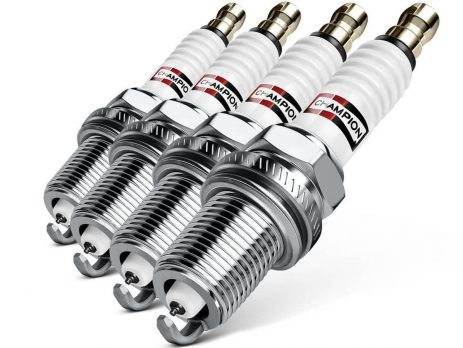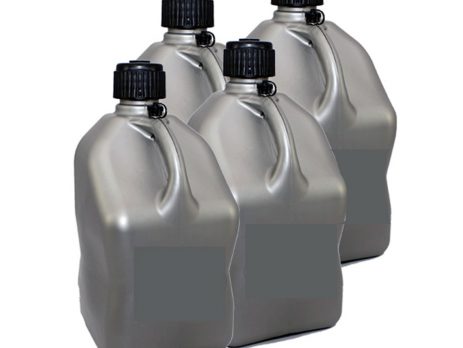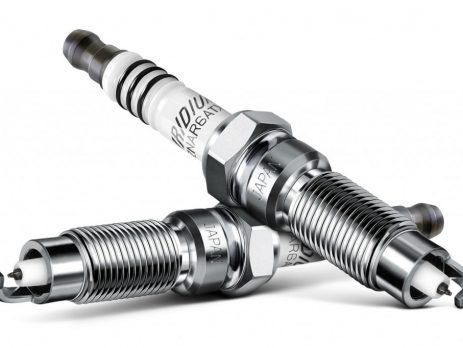The Woes of a Fuel Fitting
28SHARESShareTweet 99.99% of carburetor leaks are from a poorly installed fuel inlet fitting. May we repeat that? 99.99% of carburetor leaks are from a poorly installed fuel inlet fitting. As fuel drips from a bad seal between bowl and fitting, it WILL look like the fuel is coming from under the accelerator pump diaphragm or from between the main body and the base plate. Rest assured, those two gasketed areas are too secure to ever, ever leak in a VDL carburetor. Let’s look at some things that can go wrong: 1 – Be sure that the gasket is seated well in the register of the inlet opening of the bowl. If it is cocked up on an edge, you will never get it tight enough and it will leak. We have found that some of the thicker aluminum gaskets are a tick wide in diameter and may be tricky to position correctly. 2 – The majority of inlet fittings are made with [...]
Thread Maintenance
9SHARESShareTweet One of the mandatory steps in maintaining a race car should always be putting a wrench on every bolt before every race, and that includes the carburetor. All you need is a Phillips screwdriver, a straight blade screwdriver, a 5/16 nut driver, and a 1″ wrench. The body, bowl, and block of your Holley carburetor are typically cast moldings of zinc alloy (unless you have billet aluminum pieces) and the threads for each screw must be respected. Torqued is not the goal here, just tight! Healthy gaskets will make the seal just fine so resist the urge to over tighten. Stripped or crossed threads do not have to be a part of your racing experience, and we would like to offer some tips to prevent and/or repair this problem. Below is a list of sizes for every threaded hole in your carburetor; however, the bowl and base plate screws are the only holes that can be helicoiled and all other [...]
Understanding the Fuel Path Through Your Carburetor
33SHARESShareTweet Cobwebs in the carburetor after a long winter? Well, it’s time to fire them up! Check out our first tech video to learn more about your VDL carburetor: Go to youtube.com, and find VDL Fuel Systems Tech Tips: Pump Circuit Troubleshooting. (more…)
FYI about ethanol
16SHARESShareTweet David Pimental, a leading Cornell University agricultural expert, calculated that powering the average U.S. automobile for one year on ethanol (blended with gasoline) derived from corn would require 11 acres of farmland, the same space needed to grow a year’s supply of food for seven people. Adding up the energy costs of corn production and its conversion into ethanol, 131,000 BTUs are needed to make one gallon of ethanol. One gallon of ethanol has an energy value of only 77,000 BTUs. Thus 70% more energy is required to produce ethanol than the energy that is actually in it. Every time you make one gallon of ethanol, there is a net energy loss of 54,000 BTUs. Professor Pimental adds that “abusing our precious croplands to grow corn for an energy-inefficient process that yields low-grade automobile fuels amounts to unsustainable subsidized food burning”. Something to think about . . . .
Tech Tip: Spark plug selection
25SHARESShareTweet One of the most misunderstood tuning habits is reading spark plugs. For the in-depth discussion of this topic, refer to Dan’s paper presented to the Automotive Engine Technology Conference (found on the tech page). Here’s the short version: a rich engine can look lean when the plug is too hot. Conversely, a low compression engine can look rich on the plug when it actually has the correct air/fuel mixture if the plug is too cold. So, here’s a quick guide to spark plug heat range selection: 9:1 compression = 59 to 61 heat range 10:1 compression = 57 to 59 heat range 11:1 compression = 57 heat range 12:1 compression = 57 heat range 13:1 compression and up = 55 heat range Please note that these heat ranges are Champion’s numbers and can be easily converted to the matching plug for any major brand. Extended tip plugs (indicated by the Y in Champion numbers) are never harmful as long as you have piston clearance. There is [...]
Tech Tip: Choice Of Fuel
24SHARESShareTweet Never ever use pump gasoline in any racing application. Pump gas contains many unknown additives, and the blends will vary season to season, and region to region: summer time in Colorado is different than summer time in Georgia which will be different than any place in California. The additives also vary based on the particular region’s environmental requirements, like Los Angeles versus Montana. All this said, pump gas has too low of an octane rating to be used in any race engine 9:1 compression and higher, and has additives that are never consistent. The addition of ethanol in our gas at the pump has now created moisture retention concerns as well and has introduced corrosive characteristics to the fuel that WILL destroy your entire fuel system over a season. Leaded racing fuel of the proper octane rating is the fuel of choice. Historical data that we have all gathered over the years allows us to tune the carburetor and adjust [...]
Tech Tip: Over The Winter
24SHARESShareTweet To store your carburetor over the off-season, drain the bowls by removing one of the bottom bowl screws and pumping the pump circuit completely dry. This will generally suffice, but an extra margin of safety can be obtained by pouring a mixture of leaded racing gas and Marvel Mystery Oil into the carburetor through the vent tubes, pumping the solution through the pump circuit, and then draining out the excess. Even better: run the same mixture through the entire engine, lubricating rings, valves, and cylinder walls, as well as the carburetor. If you use oxygenated fuel, alcohol, or any blend of ethanol, this maintenance step should be taken frequently through the season to combat corrosion. Now, this process will smoke you out of the shop, but it will help maintain the health of your fuel system.
Anything and Everything You Want to Know About Spark Plugs
50SHARESShareTweet 1991 SUPERFLOW ENGINE TECHNOLOGY CONFERENCE WRITTEN BY: Dan VanderLey / Motorsports Engineer, Champion Spark Plug Co. Mark Twain quotation – “Thunder is impressive and thunder is great but it’s lightning that does the work.” Definition – A device which provides a gap in the combustion chamber of an internal combustion engine across which an electrical discharge may occur which initiates the combustion of an air/fuel mixture.The spark plug performs a simple function in a complex environment. CANDLE IN A HIGH WIND just as in the title the candle is affected by the wind’s characteristics, so in our choice of plugs we must consider not only it’s basic function but more importantly the “wind” it operates in. 1. PARTS AND ASSEMBLY A basic understanding of the parts and assembly will later help in the application and interpretation of the plug. (Cut-away plug below) PARTS A. Insulator – Aluminum oxide ceramic, must have good dielectric and mechanical strength, good thermal conductivity and resistive to heat shock B. Center Wire – [...]









